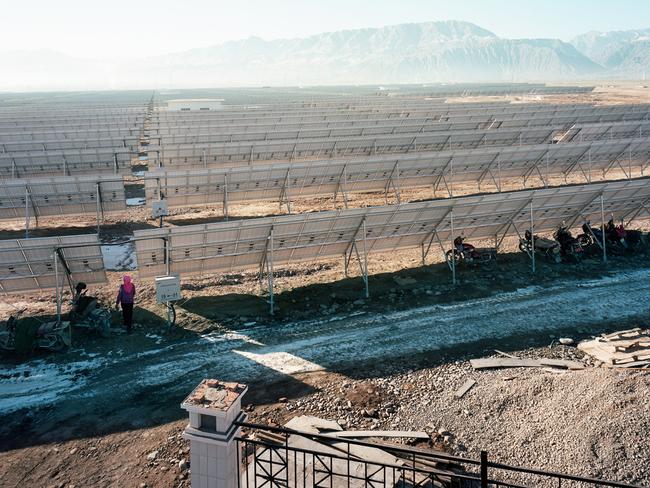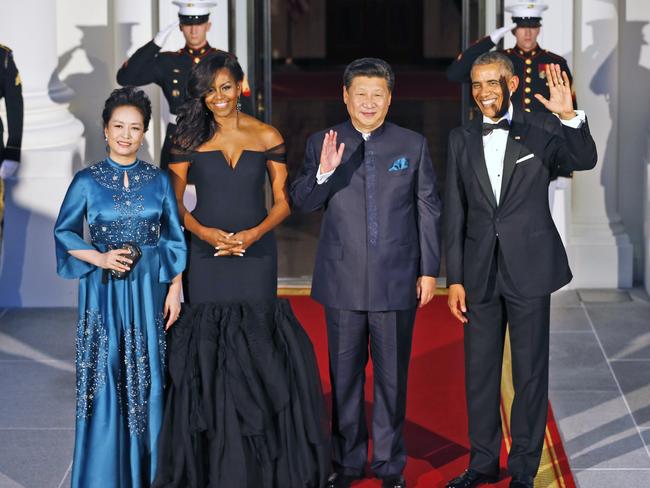Is China’s ‘spectacular’ move on climate action a game changer?
IT’S your move, Malcolm Turnbull. China has made a huge statement on the environment that Australia would be foolish to ignore.

CHINA has just made a “spectacular” commitment on climate action that has the potential to create a significant problem for Australia.
The announcement on Friday that the world’s biggest carbon emitter, and Australia’s largest trading partner, plans to introduce an emissions trading scheme could be a game changer for climate action.
China has signed a joint presidential statement with the United States on climate change that emphasised the need for a low-carbon transformation of the global economy this century.
“If the world’s two largest economies, energy consumers and carbon emitters come together like this, then there is no reason for other countries, whether developed or developing, to not do so as well,” US President Barack Obama said.
Australian National University Energy Change Institute director Ken Baldwin said there was no doubt that China’s decision was “significant” and would put enormous pressure on Australia to adopt a carbon pricing mechanism in the lead-up to the United Nations Climate Change Conference in Paris.
But Prime Minister Malcolm Turnbull has said Australia would stick to its Direct Action Plan, which some have criticised for being expensive and ineffective, but which has been successful in reducing emissions by paying companies to reduce the pollution they produce.
So is China’s move really the game changer some suggest?
WHAT IS CHINA DOING?
China plans to launch a “cap-and-trade” emissions trading system by 2017, which will place a limit on emissions while also creating a market where companies can trade carbon allowances.
This system will cover power generation, steel, cement, and other key industrial sectors.
“The cap-and-trade system is the most effective and efficient way to limit greenhouse gas emissions,” Prof Baldwin told news.com.au.
It follows the success of test programs launched since 2013 in seven major cities such as Beijing, Shanghai and Guangzhou. Carbon prices vary across these pilot sites, ranging from $US1.9 per tonne in Shanghai to $US7.3 per tonne in Beijing.
Low-carbon sources of electricity will also be favoured in the country’s grid, complementing the US’s plan to reduce emissions in its power sector by 32 per cent by 2030. Both countries are also developing heavy-duty vehicle fuel efficiency standards.

Another significant announcement is that China will contribute $4.4 billion ($US3.1bn) to the Green Climate Fund, which supports climate action in developing countries. The US already pledged $US3 billion to the fund last year.
China has also agreed to work towards controlling public funding of projects with high pollution and carbon emissions in its own country and overseas.
WHY IS THIS SIGNIFICANT?
Climate policy expert Associate Professor Peter Christoff told news.com.au that Australian climate change policy had so far been held back by the belief that other countries were not doing enough.
“Now it’s clear the US and China are pushing together very hard to provide global leadership,” the University of Melbourne academic said.
He said the announcement, along with what the European Union and other countries were doing, meant that about 40 per cent of global emissions would now be covered by a carbon price.
“In Australia the question of an emissions trading scheme is firmly back on the agenda and Malcolm Turnbull will have to address that question,” Prof Christoff said.
On Saturday, Opposition environment spokesman Mark Butler described China’s move as “spectacular” and said many Australians had hoped Mr Turnbull would “drag his party back to the sensible centre on climate change” and commit to his previously preferred emissions trading scheme.
While China could have multiple motivations for acting on climate change, Prof Baldwin said it was interesting to note that China was also the world’s largest producer of renewable energy systems, both solar and wind.

“Consequently, China views the adoptions of international measures to reduce carbon emissions as an opportunity for such industries,” he said.
The promise of Chinese funding to support action in developing countries was also an important development.
“The significant and new climate finance pledges made by China is a game changer in international climate politics,” Greenpeace senior climate analyst Li Shuo said.
“It is a drastic increase from China’s previous finance commitments.”
TRADE BARRIERS COULD BE CREATED
Prof Baldwin said if Australia did not join the global move towards carbon pricing, it could become isolated as this could effectively create a trade barrier for Australia’s exports.
“If Australia is not part of a global trading scheme, a country could legitimately argue that in order to limit carbon emissions, it should introduce an effective carbon tax on goods that don’t already include one. A country could also argue for punitive measures, to place a higher premium on imported goods that don’t already include a carbon price,” he said.
If China did take this approach, Australian products would become more expensive for Chinese to buy.
When asked why China wouldn’t consider Direct Action to be an effective measure to reduce carbon emissions, Prof Baldwin said it was not funded to a sufficient level to create the change that a carbon pricing scheme could achieve, despite being effective at reducing emissions.

“Emission reductions that arise because you are planting a forest do not affect industries that are carbon intensive from reducing their carbon content,” he said.
He said Direct Action also did not impact on all goods in every part of the economy in the same way that a carbon price could achieve.
BAD FOR COAL?
The Minerals Council of Australia chief executive Brendan Pearson told Fairfax that Australia could actually benefit from China’s move to a carbon trading system.
He said Australia’s coal generally had a higher energy content and low impurities, which would be ideal for new-generation, coal-fired power stations that China is building to help cut its emissions.
“Far from being a threat, there is a real opportunity for Australia’s coal sector in China’s efforts to reduce emissions at lowest coast,” Mr Pearson said.
But Prof Baldwin said while this might be true when comparing Australia’s coal production with other countries that created dirtier coal, he thought there would be a decreasing demand for coal over time.
Prof Christoff agreed, saying he thought the Minerals Council was “certainly being an optimist as far as the long term future is concerned”.
Another potential issue is that China, one of the largest providers of public financing for infrastructure worldwide, has also committed to controlling public funding of high-polluting projects.
This follows a 2013 commitment from the US to end public financing for new conventional coal-fired power plants except in the poorest countries.

Australia has not yet taken this position but Prof Christoff said there had been an attempt to include a “greenhouse trigger” in the Environment Protection and Biodiversity Conservation Act to make it harder for carbon intensive projects to get up without compensatory measures, but it was unsuccessful.
Prof Christoff said ending the subsidies paid to fossil fuel companies and producers had the potential to significantly rebalance the costs of carbon reduction. Another option would be to force fossil fuel based electricity generators to become more efficient, forcing them to “compete on fair grounds with renewables in terms of impact”.
ECONOMY COULD SUFFER
With nearly 50 jurisdictions now committed to an effective climate pricing mechanism, Prof Baldwin said change was now possible.
“This represents now a critical mass of the world’s nations, which could enable a carbon pricing scheme to be introduced globally,” Prof Baldwin said.
“No doubt it will have a negative impact on the economy, unless Australia itself adopts an emissions trading scheme or other measures to reduce emissions,” he said.
But Prof Baldwin said there were also opportunities for Australia to provide goods and services that have a low carbon content, and that assisted other countries, particularly in the region to transfer their economies towards a low carbon future.
As an example, Prof Baldwin said Australia could act as a regional centre for the development of renewable energy, such as micro grid systems, which could transform areas in less developed countries that were not already connected to the grid, or had unreliable electricity supplies.
THE FUTURE
Environment Minister Greg Hunt said Australia would still take its 26 to 28 per cent 2030 emissions reduction target on 2005 levels to the Paris climate change conference but there could be scope to make more ambitious cuts.
“It’s highly likely that the outcome from the Paris meeting will be a process for review of global and national targets, perhaps every five years, and that will prepare us for 2020, 2025 and 2030,” Mr Hunt told Fairfax.
Prof Baldwin said the conference provided an ideal opportunity for the Turnbull Government to review its climate change policies.
“It could trigger a new set of policy directions that would more effectively meet Australia’s response to addressing climate change in the lead up to the next election,” he said.



